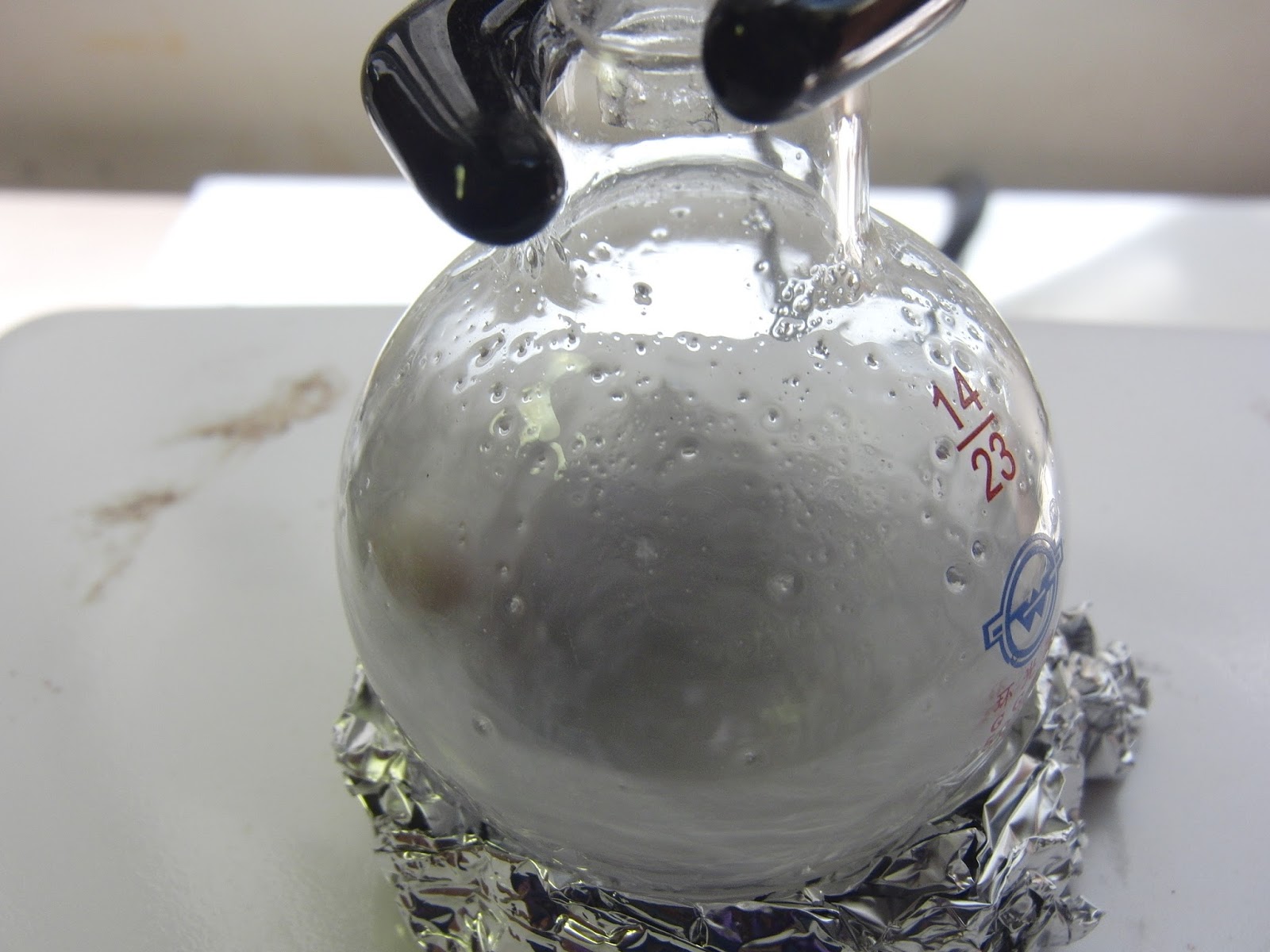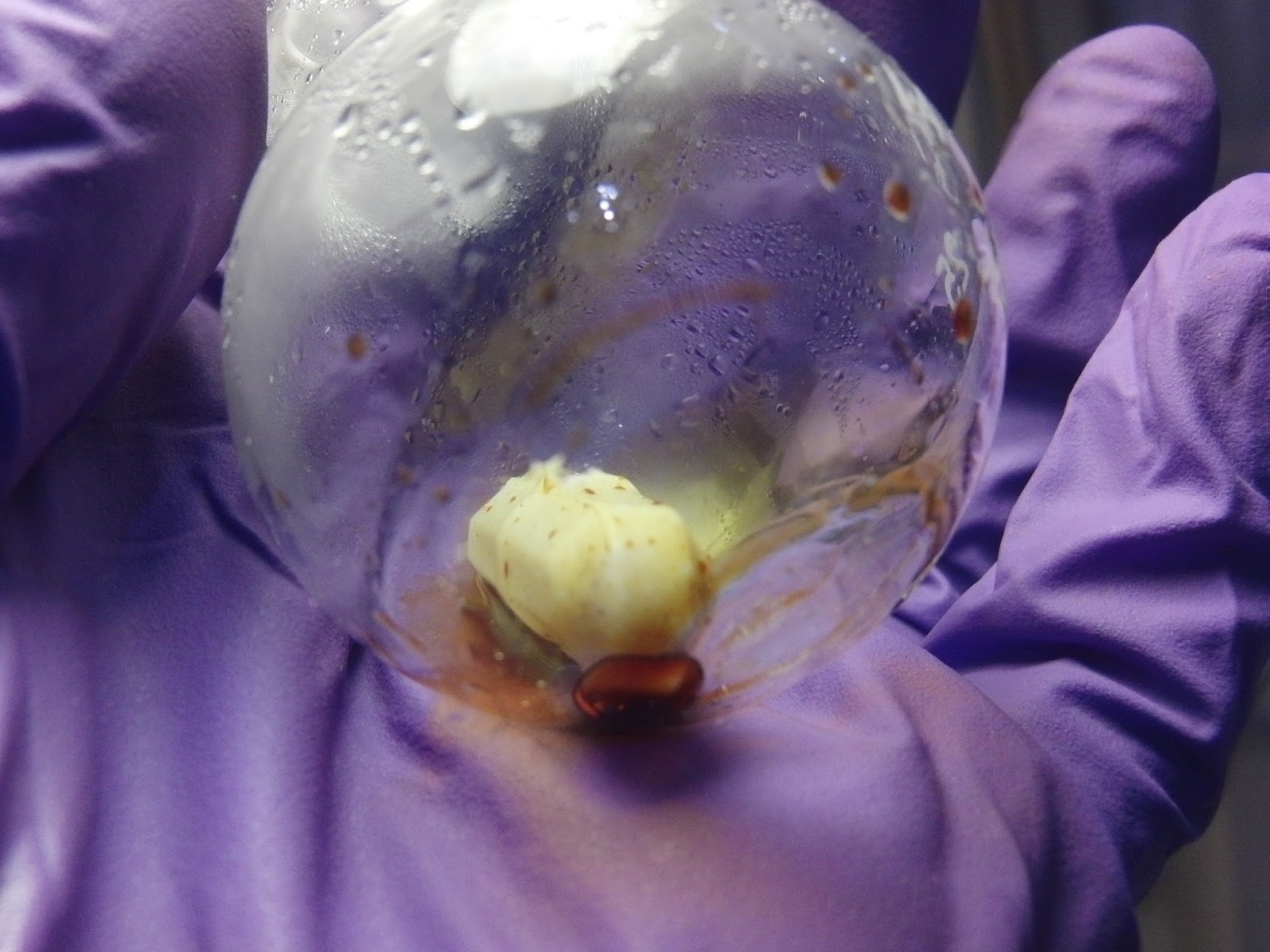Ethyl
acetoacetate (EAA) is mainly used as a chemical
intermediate in the production of a wide variety of compounds, such as amino
acids, analgesics, antibiotics, antimalarial Ethyl acetoacetate is mainly used as a chemical intermediate in the
production of a wide variety of compounds, such as amino acids, analgesics,
antibiotics, antimalarial agents, antipyrine and aminopyrine, and vitamin B1;
as well as the manufacture of dyes, inks, lacquers, perfumes, plastics, and
yellow paint pigments. Alone, it is used as a flavoring for food.
The
Claisen condensation is a carbon–carbon bond forming reaction that occurs between two esters
or one ester and another carbonyl compound in the presence of a strong base,
resulting in a β-keto ester or a β-diketone. It is named after Rainer Ludwig Claisen,
who first published his work on the reaction in 1887.
Claisen Condensation
Reaction
Equation
Mechanism
Chemicals
1.
Ethyl acetate: 25mL ; FW
88.11g/mole ; m.p. -84℃ ; b.p. 76.5~77.5℃
2.
Xylenes: 12.5mL ; FW 106.17
g/mol ; b.p. 137~140℃
3.
Acetic acid: FM 60.05g/mol ; m.p.
16.2℃ ; b.p.117~117℃
4.
Magnesium sulfate anhydrous
5.
Sodium Metal: 2.0g
Procedure
1.
Add 12.5mL xylenes [1] and 2.0g
fresh sodium metal in a 50 mL round-bottom bottle.
2.
Reflux the mixture until sodium
melts.
3.
Stir the mixture violently to prepare
sodium beads.
Sodium beads are shining
4.
Pour out xylenes and recycle
it.
5.
Add 25 mL ethyl acetate
immediately and set up a reflux apparatus.
The mixture turns into yellow at first
6.
Reflux the mixture for about
1.5 hr until sodium beads are all dissolved.
Finally, the mixture becomes orange because of the sodium enolate
7.
Cool the solution to about 50 mL
and then add 50% acetic acid to acidify the solution [2].
8.
Transfer the solution into a
separatory funnel and add same volume of saturated NaCl solution to wash the
mixture.
9.
Drain out the layer of ethyl
acetoacetate.
10. Dry the compound with Mg2SO4 anhydrous.
11. Distill the compound under 1.0atm to remove ethyl acetate.
12. Distill ethyl acetoacetate under reduced pressure [3] (~0.079atm=7.99kPa=60mmHg).
Ethyl acetoacetate
Residue in the vessel
Product should look like crystal clean
Notes
[1] To
make sodium beads which make the reaction faster, we have to use a solvent which
melting point should higher than sodium and would not react with it. To compare
boiling points of benzene(80℃), toluene(110~111℃) and xylenes(137~140℃) with sodium metal(97.8℃), so toluene and xylene may be used as the kind of solvent. But
when the temperature is near 100℃(near the m.p. of sodium), the vapor pressure of toluene will raise
to 553mmHg while xylenes is only at 342mmHg. So we can prevent the high vapor
pressure in the reacting vessel by using xylenes.
[2]
Don’t add too much acetic acid or it would raise the solubility of ethyl
acetoacetate then reduce the yield of product.
[3]
The boiling point of ethyl acetoacetate is 189℃ under 1.0atm. But
this compound decomposes readily at high temperature and turn into acetic
anhydrous. To prevent EAA decomposes, we could distill it under reduced
pressure to lower the boiling point EAA.
Experimental Record
|
Boiling Point of Ethyl Acetate
|
73.0~76.0 ℃
|
|
Boiling Point of Ethyl acetoacetate (under
0.079 atm.)
|
100.0~101.0 ℃
|
|
Theoretical Weight of Ethyl Acetoacetate
|
11.31 g
|
|
Weight of Ethyl Acetoacetate
|
3.62 g
|
|
Yield
|
32.0 %
|





























are there any safety concerns for waste dispoal or environmental concerns?
ReplyDeleteMost excellent blog, reaction, pictures and write up. It's a shame the yield wasn't bigger.
ReplyDeleteThanks~
Delete[3] The boiling point of ethyl acetoacetate is 189℃ under 1.0atm. But this compound decomposes readily at high temperature and turn into acetic anhydrous. To prevent EAA decomposes, we could distill it under reduced pressure to lower the boiling point EAA.
ReplyDeleteWhen you say that ethyl acetoacetate decomposes at high temperatures into acetic anhydrous, do you mean dry acetic acid (glacial), or acetic acid anhydride?
If you are looking for more information about flat rate locksmith Las Vegas check that right away. PI
ReplyDelete